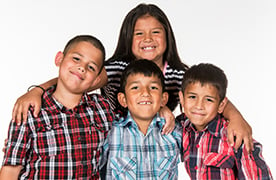Jump to topics on this page:
 Maybe you’re worried about your child’s progress in school. Or maybe you get a call from your child’s teacher who says your child is being disruptive in class, not paying attention, or “not living up to their potential.” Maybe your child falls apart the minute that they get home every day. Or maybe they melt down at the suggestion of doing homework or reading a book.
Maybe you’re worried about your child’s progress in school. Or maybe you get a call from your child’s teacher who says your child is being disruptive in class, not paying attention, or “not living up to their potential.” Maybe your child falls apart the minute that they get home every day. Or maybe they melt down at the suggestion of doing homework or reading a book.
Sometimes these things happen when a typically developing child is adjusting to a new classroom or school. Or they might be the first signs that your child has a learning disability or related condition.
If you or your child’s teachers suspect that your child might have a learning disability, it is worth checking it out further. After all, many people have learning disabilities – nearly 1 in 5 people have one. And with help, children with learning disabilities can be very successful in school and in life.
A child who has a learning disability does not process information in the same way as a typically developing child of the same age. By processing, we mean that a child hears, touches, sees, reads, or smells something that sends a message to their brains. Then, they make sense of what is going on and possibly take action. When a child has a processing difference or learning disability, the information might not flow to and from their brain and body as smoothly. It might get stuck or take a turn along the way. These processing differences can make it hard for a child to learn if teachers and other school staff do not know about them or make accommodations.
You might hear processing differences called “learning differences.” You might even use this term yourself because it feels better to you and your child. However, using the word “disability” at your child’s school and when looking for other services and supports is very important. A “learning difference” alone might not be enough to justify 504 accommodations. See our Section 504 page to learn more about 504 accommodations. And to get special education services, your child must have a disability that fits in one of the 13 groups listed in the Individuals with Disabilities Education Act (IDEA). Specific Learning Disability (SLD) is one of these groups, but there is no group for learning differences.
Some common learning disabilities include:
LD Online has a list of common symptoms that you might see in children with learning disabilities.
When a child with a learning disability is giving their best effort and still not learning, it’s easy for them to have low self-esteem or just give up on school. With the right Individualized Education Program (IEP) or 504 accommodations, your child can learn at their level and do better in school. By acting early, you can help your child be more successful from here on out.
To find out how to get your public school to test for learning disabilities and get accommodations, see our page on special education 101 or Section 504 .
When a teacher tells you about your child’s learning and school behavior challenges, it can be hard to know what to think. It might sound like the teacher is describing a completely different person.
The school environment is very different from the way things are at home. There is a strict schedule and a lot of transitions (and not a lot of choice or wiggle room). There are a lot of things to look at, read, listen to, and focus on. And your child needs to do all of that when someone else expects it, in the way they expect it. This can be very hard for a child who needs more time to process information about the world around them or whose brain wants to process things in a different way. Your child might respond by checking out or acting out when it gets to be too much.
At home, children generally have a lot more choice and control. Home might be the place where they can unload their emotions at the end of the day. Or it might be the place where they can relax and pay attention because they are most comfortable. It’s common that children don’t act the same way at home and at school.
So your child’s teacher really might see different behavior in the classroom. The teacher can be a key teammate as you work to find out if your child has a learning disability.
If your child has a learning disability, you are not alone. In addition to specialists at your child’s school, there are many online and community programs to help parents. See our Special Education 101 page to learn more about help at school.
Here are some we’ve collected from other parents:
Learning disabilities are often thought of as invisible disabilities, because people can’t easily see them and might not expect them to be there.
It’s very important that you help your child understand as much about their learning disability as possible. They need to know why they need services in order to succeed. And, when they grow up and leave school, there will be times when they need to ask for accommodations in life or explain the ways that they can work or learn best.
So, helping them understand their learning disability is the first key to helping them succeed.